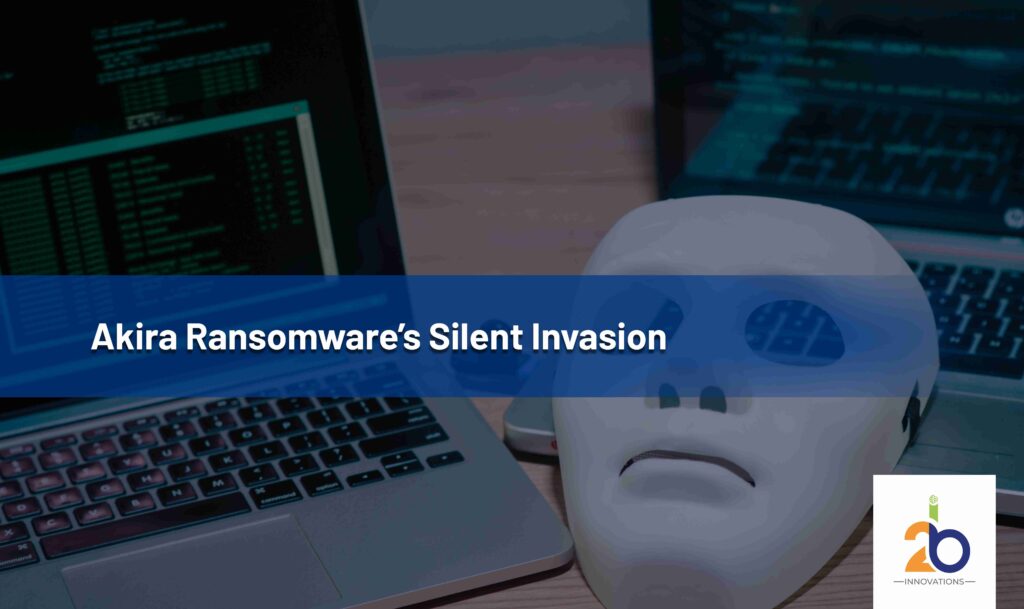
The cost of cyber attacks on the global economy is expected to exceed $10.5 trillion by the end of next year, says a white paper from IT security firm Hitachi Insight Group (HIG).
This staggering figure shows how critical cyber security has become, and why it must be treated as a strategic issue on an individual, organizational, and governmental level.
Just as in every other field of business and technological development, artificial intelligence (AI) will change everything in attack and defense. It will be felt to some extent in all the trends discussed here.
In many fields, the pace of technological progress in recent years has accelerated; cyber threats are no exception.
So this is what we predict are the trends in cyber security everyone will have to be on their guard for as we move towards 2024.
Top 9 Cybersecurity Trends That We May Find In 2024
Zero-Trust Architecture
In 2024, zero-trust architecture is leveling up with AI, boosting its power in cybersecurity. This method sticks to the idea of “trust no one, check everything” and now teams up with AI to make constant checks even better.
It’s getting smarter at adjusting access controls as risks change, keeping a close eye on user credentials and actions. With AI spotting odd behaviors, zero trust gets sharper at finding and handling potential threats.
The Securities and Exchange Commission (SEC) is hustling to meet the long-term zero-trust rules set by the Office of Management and Budget. By the end of fiscal year 2024, federal agencies need to nail their zero-trust security game. To do this, agencies need to appoint a zero-trust strategy lead and complete 19 tasks.
By combining AI’s analysis of how users behave and how devices are doing, this security method stays on top, tailoring responses to whatever’s happening.
AI-Powered Cybersecurity Defenses
It is predicted that by 2030, around 30 % of tasks will be automated using AI technology. Artificial intelligence heralds a new era of training for the cybersecurity workforce.
AI-powered simulation platforms for more realistic training adapting to a changing threat landscape and keeping cybersecurity pros honed. It provides a safe, dynamic environment for professionals to hone their skills. The learning curve goes into overdrive for newcomers; everyone is prepared to face the coming threats in cybersecurity.
Cyber Security In The Boardroom
In 2024, cybersecurity is no longer just an IT issue. It’s a strategic consideration, and integral to business strategy as a whole.
In Gartner’s estimate, by 2026 at least one member with cybersecurity experience will be sitting on the board of 70 percent of corporations. The change indicates a growing understanding of how important cybersecurity is to an organization’s resilience and success.
Those firms that get ahead of the wave can leap from reactive defense measures to take advantage of cyber-security as a springboard for seizing new business opportunities.
Making sure cybersecurity factors are being considered at the board level means that senior executives can make decisions with full consideration of how these align with their company’s overall business objectives. This helps raise resilience against fast-changing threats.
Data Backups And Recovery With AI
But in 2024, integrating AI into data backups will be routine, transforming how organizations think about security. Kyoto University, where a badly designed emergency system caused it to lose 77 terabytes of research data provides a case in point.
One problem was that the most recent backup job completely wiped out backup data from previous runs, leaving no usable backups when it came time to restore data. Generative AI tools usher in a new era for disaster recovery. Beyond traditional restoration methods, this brings efficiency and reliability to procedures.
This can enable organizations to see a drastic increase in data resilience and be better prepared for the case of loss or corruption. But the transformative effect doesn’t stop there: AI can affect the streamlining of the recovery workflow.
Such a rapid and effective recovery is important to maintain operational continuity and minimize the impact of a breach.
Ensuring Secure Data Practices
In 2022, nearly half of companies were compromised by cyberattacks because of third-party involvement. In the same year, more than 112 million attacks were directed at IoT systems.
Cybersecurity is being transformed by privacy-preserving ways of doing AI such as federated learning and homomorphic encryption. By providing tools for the extraction of insight without threat to individual privacy, they help organizations keep up with changing regulations.
These techniques become important in terms of building trust, and balancing cybersecurity and privacy rights for ethical and secure data management.
Human Augmentation For Security Operations
In 2024, cyber operations will reach a tipping point thanks to the synergy of people and AI. The goal of integrating AI is to have it take over routine tasks so that human experts can focus on supporting strategy.
Through combined AI speed with human intuition, organizations model a stronger and more flexible defense against cyber threats. It is a shift from defensive (reactive) to security operations (proactive).
This partnership approach improves threat detection and response and makes adaptability possible.
Soft Skills Increasingly Essential For Cyber Security Professionals
In 2024, rising uncertainty and multifaceted threats confront cybersecurity experts. While technical skills are still important, success ultimately requires effective interpersonal communication and problem-solving.
Knowing human nature is vital to the construction of a stable, secure atmosphere and the handling of complex cyber situations. This change recognizes the importance of human factors in cybersecurity, and that it takes more than technical expertise to be successful.
Widespread Adoption of Passwordless Authentication
The shortcomings of the old system force many industries toward passwordless authentication in 2024.
User verification is increasingly being taken over by biometrics such as fingerprints and facial recognition, which are more secure than simple passwords. This change not only strengthens security but also simplifies the user experience, eliminating the need to remember multiple passwords.
In the year 2024, it represents a step towards safer, user-friendly authentication on the Internet.
Third-Party Security Remains a Challenge
Vulnerabilities in partner networks are gonna be a big headache for third-party security in 2024. These weak links are targets attackers exploit to penetrate larger systems, making it difficult to implement security uniformly.
Some organizations are seeking answers from vendor security checklists and stringent testing. However, the complexities of these relationships still pose an obstacle to achieving complete enterprise cybersecurity.
Government Action On The Rise In Cybersecurity
The accelerating pace of technological advancements coupled with the expanding landscape of cyber threats prompts governments to intensify their involvement in cyberspace regulation and control.
- Cybersecurity Legislation:
Anticipate a surge in cybersecurity-related regulations as governments seek to establish frameworks to safeguard critical infrastructure, protect consumer data, and combat cyber threats. These regulations aim to impose stricter standards on organizations regarding data protection, incident reporting, and resilience measures.
- Heightened Response to State-Sponsored Attacks:
Governments will focus on fortifying defenses against state-sponsored cyber threats. The increase in nation-state-backed attacks prompts governments to bolster their cybersecurity postures and establish diplomatic measures to deter such activities.
- Focus on Regulatory Documentation and Compliance:
With the surge in regulations, organizations face an increased demand for comprehensive regulatory documentation. Compliance requirements become more stringent, necessitating detailed records showcasing adherence to cybersecurity standards.
- Public-Private Partnerships:
Governments will foster closer collaboration between public and private sectors to enhance cybersecurity resilience. Joint efforts in information sharing, threat intelligence exchange, and coordinated response strategies will be emphasized to combat evolving threats effectively.
These government-driven initiatives aim to fortify cybersecurity measures, foster collaboration among stakeholders, and establish a more regulated and resilient digital environment.
2023 Cybersecurity Issues Perpetuating in 2024
Several ongoing cybersecurity challenges from 2023 will persist and require sustained attention in 2024.
In addition to weak security foundations, inadequate cybersecurity awareness, and the persistence of ransomware attacks, a few other trends are set to endure.
- Supply Chain Vulnerabilities:
The vulnerabilities inherent in supply chains will continue to pose significant threats. Attackers target supply chain weaknesses to infiltrate interconnected networks, emphasizing the importance of securing the entire supply chain ecosystem.
- Emergence of New Threat Vectors:
The evolving threat landscape is likely to introduce novel attack vectors. These new threats could stem from emerging technologies, interconnected devices, or innovative attack methodologies, requiring proactive adaptation to counter them effectively.
- Legacy System Vulnerabilities:
Outdated systems and legacy technologies remain a cybersecurity challenge. Unsupported or unpatched legacy systems create entry points for attackers, highlighting the need for modernization and strategic migration plans.
- Insider Threats:
The risk of insider threats, whether malicious or unintentional, continues to persist. Employees, contractors, or individuals with access to internal systems pose a significant risk, necessitating robust monitoring and user behavior analytics.
- Data Privacy Concerns:
Data breaches and privacy concerns continue to haunt organizations. Stricter regulations and consumer demands for data protection call for improved data governance, encryption, and privacy-focused policies.
- IoT Security Risks:
The proliferation of IoT devices introduces a broader attack surface. Inadequately secured IoT devices remain susceptible to exploitation, potentially compromising entire networks or critical infrastructure.
Addressing these persistent issues demands a concerted effort to fortify security measures, enhance awareness and education, improve supply chain resilience, and prioritize effective patch management to mitigate evolving threats.
Prepare for These Cybersecurity AI Trends in 2024
The field of cybersecurity is in for some major changes. The future depends on how well AI can adapt, learn, and work with other human experts. In the face of today’s emerging cyber threats and trends in 2024, only staying alert will shape a safer digital future.



